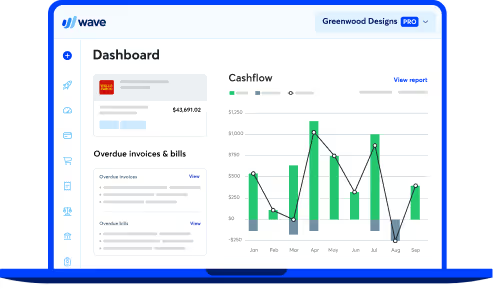
Managing independent contractors at tax time 101
From designers to cleaners to drivers, there’s an endless amount of independent contractors small businesses tend to hire. With all the turmoil over the past few years, independent contractors have held steady as a considerable percentage of the US workforce.
While they can add value to your operations, they also have tax implications. In this blog post, we’ll focus on the 1099 forms you need to know, mainly Form 1099-NEC. If you rely on contractors to run your business, these forms play an important role in setting up payroll for your business.
What are 1099 forms?
These forms are the documents that provide government tax agencies with important information on financial transactions. Per Investopedia, “All 1099 forms serve the same purpose; they are used by taxpayers to provide information to the Internal Revenue Service (IRS) about all of the different types of income they receive throughout the year outside of their regular salary.”
Form 1099-NEC was just introduced this year. It’s used to report non-employee compensation, such as paying independent contractors. You’re required to send this form to any independent contractor who you paid at least $600 during the year. If you’re unsure of how to classify workers, the IRS has provided guidance here.
You can find more information on other 1099 forms like 1099-K and 1099-MISC in this helpful guide.
Why are 1099 forms important?
First and foremost, it’s legally required. If you don’t send necessary forms like 1099-NEC to the IRS when required, you can end up facing significant fines. Not providing a correct statement (“intentional disregard”) carries a penalty of $560 per 1099, with no maximum for the year. Missing filing deadlines one problem you might face during payroll tax season.
The amount of the penalty is based on when you file the correct information return, as follows for small businesses:
- $50 per 1099, if you file within 30 days of due date; maximum penalty of $197,500
- $110 per 1099, if you file more than 30 days after the due date but by August 1; maximum penalty of $565,000
- $280 per 1099, if you file after August 1; maximum penalty of $1,130,500
Second, they’re a critical part of helping independent contractors file their tax returns accurately. In some cases, taxes are not withheld from workers who qualify for 1099s, but in other situations there may be “backup withholding”. That means there may be additional calculations required to ensure accuracy.
How do I ensure my business is compliant?
For Form 1099-NEC, you’ll need to file if the following four conditions are met:
- You made a payment to someone who is not your employee.
- You made a payment for services in the course of your trade or business (including government agencies and nonprofit organizations).
- You made a payment to an individual, partnership, estate, or, in some cases, a corporation.
- You made payments to a payee of at least $600 during the year.
If so, you’ll need to provide them with Form 1099-NEC and file your own copy with the IRS and applicable state agencies. Form 1099-NEC is due to your contractors and the IRS by January 31st of the following tax year. If this date falls on a weekend or holiday, the filing deadline moves to the following business day.
For the 2020 tax year, Form 1099-NEC is due to the IRS by February 1st, 2021, as January 31, 2021 falls on a Sunday. Please note that if using Wave to file, our deadline to ensure timely filing is January 25th, 2021
How do I generate and file Form 1099-NEC?
If you don’t want to spend hours doing this on your own, Wave's small business payroll software makes it easy and affordable to create and file these forms with the IRS and, where applicable, state agencies. This saves you valuable time, and is available for just $5 per contractor.
To get started, we’ve put together a step-by-step guide. We hope you’ve found this info helpful and are on your way to a smooth tax season.
(and create unique links with checkouts)
*While subscribed to Wave’s Pro Plan, get 2.9% + $0 (Visa, Mastercard, Discover) and 3.4% + $0 (Amex) per transaction for the first 10 transactions of each month of your subscription, then 2.9% + $0.60 (Visa, Mastercard, Discover) and 3.4% + $0.60 (Amex) per transaction. Discover processing is only available to US customers. See full terms and conditions for the US and Canada. See Wave’s Terms of Service for more information.
The information and tips shared on this blog are meant to be used as learning and personal development tools as you launch, run and grow your business. While a good place to start, these articles should not take the place of personalized advice from professionals. As our lawyers would say: “All content on Wave’s blog is intended for informational purposes only. It should not be considered legal or financial advice.” Additionally, Wave is the legal copyright holder of all materials on the blog, and others cannot re-use or publish it without our written consent.


























